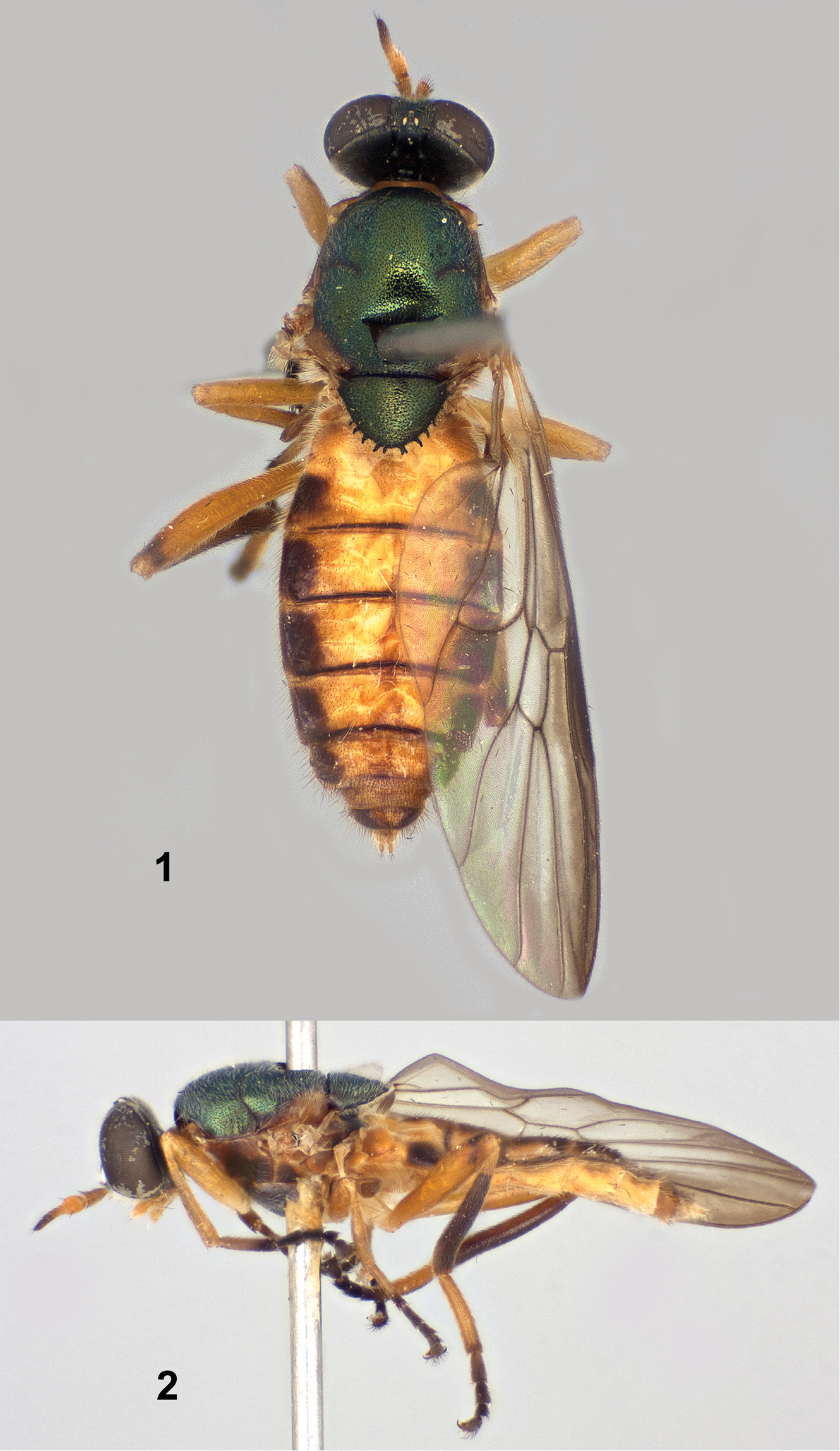In the jungles of southern Mexico there are treasures that glitter and sparkle more than even the most luxurious displays at Tiffany’s, so rare we’ve only ever caught a glimpse of them once. These jewels are made not of stone, crystal or precious metal, but rather segments, cuticle and a punctate mesonotum. Yes, like usual, I’m talking about a fly.
And what a beautiful new Soldier Fly (Stratiomyidae) it is! Meet Paraberismyia chiapas Woodley, which has only just been described, despite having been a prized possession for nearly 20 years.

Holotype Female of Paraberismyia chiapas Woodley by Norm Woodley CC-BY (Figures 1 & 2 from Woodley, 2013)
A member of the Beridinae, a subfamily of soldier flies known for their colourful & metallic appearance, Paraberismyia chiapas had been recognized as an undescribed species by Norm Woodley in 1995 when he described the genus Paraberismyia, but because he only knew of a single female specimen at the time, he decided to hold off on formally describing the species until he could locate additional specimens. Fast forward nearly 20 years, and a second specimen of Paraberismyia chiapas has yet to be collected, so Norm decided to not wait any longer and published this and 2 other new species in the journal ZooKeys earlier this week.
Having only a single specimen collected in 1985 by Amnon Friedberg (who happens to be the same guy who studied and described several of the “ant-winged” fruit flies that went viral earlier this month — the dipterological community is an incestuous little group…), we don’t know much about this species, other than it lives in the Chiapas region of Mexico (hence it’s species name) at an elevation of 2,000 metres.
Despite there being a large entomological survey project going on in the region for the past 5 years (the LLAMA project, which, while focused on leaf-litter arthropods, you could imagine would have collected a bright green & gold fly that likely breeds and develops in leaf-litter like other members of the Beridinae), Paraberismyia chiapas has yet to make a second appearance, leaving many questions about it’s apparent rarity unanswered: is this species only found on a single mountain top, or is it restricted to a small expanse of high elevation habitats in the southern Sierra Madre de Chiapas mountain range? Is the window when adults are actively flying so short that other expeditions have just missed it? Or more concerning, has Paraberismyia chiapas disappeared completely, stolen from us before we had even given it a name? Obviously we can’t answer any of these questions, or the hundreds more regarding it’s biology and natural history (including why it’s so stunningly coloured), until someone hits pay dirt and rediscovers this little gem.
—
The other 3 species in the genus Paraberismyia are equally stunning, and I highly recommend taking a look at them (the paper is open access).
Woodley N. (2013). A revision of the Neotropical genus Paraberismyia Woodley (Diptera, Stratiomyidae, Beridinae) with three new species, ZooKeys, 353 25-45. DOI: 10.3897/zookeys.353.6301 (OPEN ACCESS)


